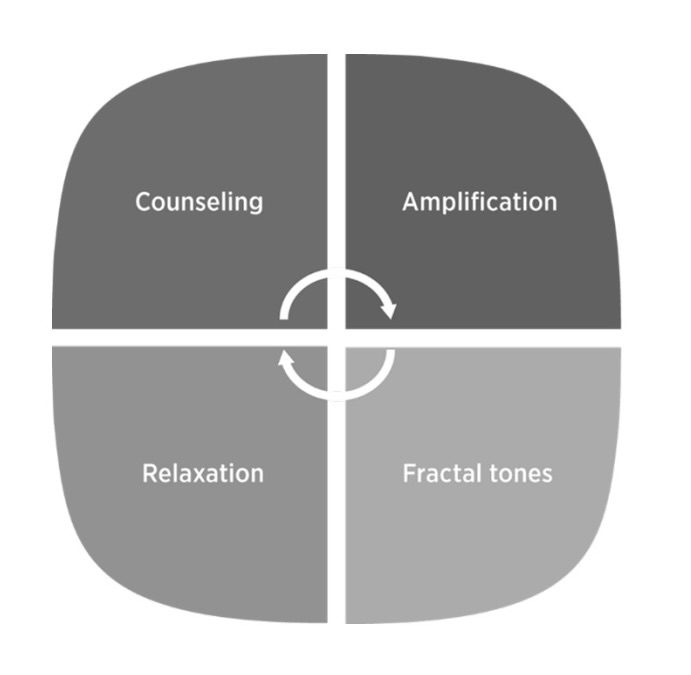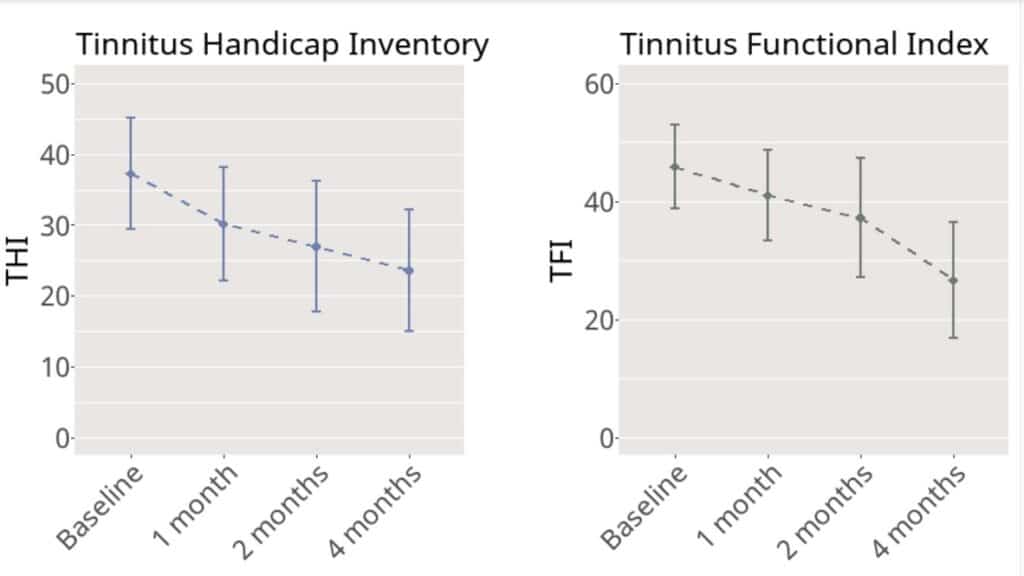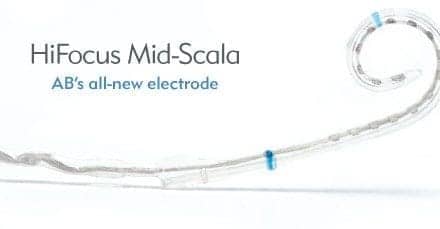Tech Topic | February 2023 Hearing Review
Relaxation is a key goal of Widex SoundRelax for users both with and without bothersome tinnitus.
By Laura Winther Balling, PhD, Sueli Caporali, PhD, Daniel Parker, MA, Anne Mette Jeppesen, MA and Dana Helmink, AuD
Among many suggested tinnitus treatments, Widex Zen Therapy (WZT) stands out as a well-documented option with a long list of studies in support of it (see 1–12 and a summary in13). WZT is not a one-track approach but combines several elements that complement each other (see Figure 1). It provides counseling to help patients understand and accept the condition, amplification for the majority of people with bothersome tinnitus who also have hearing loss, sound stimulation in the form of the Zen fractal tones, and relaxation techniques that can help break a vicious circle of tinnitus exacerbating stress and vice versa. These components can be used in isolation or in any combination to provide maximum flexibility in effectively meeting the needs of individual patients.

Within WZT, the preferred sound stimulation has been found to be Zen tones, which are chimes or melodies that use principles of fractal mathematics to ensure that the sounds are familiar but not predictable. Instead, the sounds evolve continually due to a randomizing algorithm that never repeats exactly. This means that users do not get tired of listening to the same sound for many hours a day. Widex SoundRelax was launched as an evolution of the Zen tones, based on the same fractal principles but with a broader range of different sounds, including wave sounds, a softer feel due to modified harmonics, and improved binaural synchronization.
A recent study14 has established that these new sounds are experienced as relaxing and pleasant by listeners with and without tinnitus, and that they are preferred over the previous generation of fractal tones. The present article reports on an ongoing study that investigates the long-term effects of the new sounds on tinnitus and shows significant improvements in standard measures of tinnitus severity.
Method
The results reported here are the preliminary results of an ongoing 12-month study that investigates the Widex SoundRelax sounds as part of tinnitus treatment. Like the original Widex Zen tones, Widex Sound Relax can be used within the larger framework of WZT. The current study aims to establish whether Widex SoundRelax, as a new generation of fractal sounds, is as efficient a part of WZT as the previous generation.

Twenty participants took part in the trial, of whom eight were experienced hearing aid users and 12 were not. All had some hearing loss. Their tinnitus severity varied between 14 and 74 on the 0 to 100 scale of the Tinnitus Handicap Inventory (THI).15 This means that the severity varied from mild to severe, with an average THI of 37. The study sample included seven females and 13 males, with an average age of 57 years (range 39 to 81). All 20 participants answered the questionnaires at baseline and at one and two months, while 15 participants attended the four-month follow-up, with one participant being ill and four dropping out for various reasons. This type of attrition is a typical challenge in longitudinal studies, and it is important to attempt to understand the reasons. In this case, it seems that two participants dropped out because they did not experience enough benefit from the treatment, while two dropped out for reasons unrelated to the treatment effect.
The study included three visits at the outset, where hearing thresholds and uncomfortable loudness levels were measured; hearing aids were fitted; and three Widex SoundRelax sounds (either tones, wave sounds, or combination soundscapes) were chosen by the individual. The initial visits also included baseline answers to a range of questionnaires, and a counseling session based on WZT material. Within two weeks, a follow-up was conducted via telephone. Questionnaires were then answered after one, two, and four months, with six- and 12-month follow-ups still to come. The two- and four-month checkpoints also included read-outs of the hearing aid log to allow investigation of usage patterns.
The participants answered several questionnaires at each time point. We focus here on two standardized questionnaires: the THI (see above) and the Tinnitus Functional Index (TFI).16
Results
The main result of the study at this stage is an improvement in THI and TFI scores, as shown in Figure 2. The improvement was already significant after one month and sustained at two and four months. All comparisons with baseline are significant for both THI (left panel, p’s < 0.004) and TFI (right panel, p’s < 0.02), and while there is no significant difference between one and two months and between two and four months, there is a trend towards continual improvement over time. The use of the Widex SoundRelax sounds, in combination with the use of hearing aids, generally results in a reduction of tinnitus severity, with 80% of participants experiencing an improvement.

The results also show differences between participants, as we would expect given the variability of tinnitus. First, there is a trend towards a greater improvement for participants with higher baseline tinnitus severity. Second, the improvement in tinnitus severity appears to be greater for participants who have not previously worn hearing aids. This makes sense within the multi-faceted approach of WZT, in that, on top of the fractal sounds which are new to everyone, amplification is a new element of tinnitus treatment for the new users but a more familiar element for experienced users. Widex hearing aids, with their low compression knee points and increased access to soft sounds, may be particularly well suited to alleviate tinnitus. Thirdly, there is a tendency toward greater improvements in THI for participants who use the Widex SoundRelax sounds more (r= 0.45, p = 0.087), as shown in Figure 3.
In addition to the standard measures of tinnitus severity, we also consider psychological well-being, using ratings of relaxation, concentration, and mood on 0-10 visual-analogue scales. A previous study showed high ratings of the new sounds on these dimensions in the short term for a mixed group of users,14 and it is interesting to assess the longer-term effects for the participants with tinnitus in this study. Ratings of relaxation, concentration, and mood are shown in Figure 4, with good ratings low on the vertical axis scale and poor ratings high. Although all three of these constructs are influenced by tinnitus, they are of course also affected by a range of other factors. This makes it all the more interesting and impressive to see the trends toward better ratings of relaxation, concentration, and mood, which correspond to the decrease in tinnitus severity over the same time period of wearing the hearing aids and listening to the Widex SoundRelax sounds.

Conclusions
As this study demonstrates, the new Widex SoundRelax fractal sounds show the same type of positive effects on tinnitus as have been repeatedly demonstrated for the Zen fractal tones (e.g.,1,11,12). This supports the use of the Widex SoundRelax sounds as part of the multi-faceted Widex Zen Therapy approach to tinnitus treatment, giving patients a wider range of different sounds to choose from. This may make it easier for hearing care professionals to help more patients who experience bothersome tinnitus. Widex SoundRelax provides sound stimulation and may also be used in conjunction with other techniques to support relaxation (see Figure 1).
Relaxation is a key goal of Widex SoundRelax for users both with and without bothersome tinnitus. This is supported by strong ratings of relaxation, as well as concentration, mood, and well-being, in this and a previous study.14 Given the high prevalence of stress, being able to provide patients with a tool that supports relaxation, concentration, and well-being makes the hearing care professional’s services all the more relevant. Widex SoundRelax provides such a tool for all hearing aid users who are looking to enhance their well-being.

Citation for this article: Balling L, Caporali S, Parker D. Expanding options for effective tinnitus management. Hearing Review. 2023;30(2):12-16.
References
1. Joergensen ML, Hyvärinen P, Caporali S, et al. The short and long-term effect of sound therapy on visual attention in chronic tinnitus patients. Audiology Research. 2022;12(5):493-507.
2. Simonetti P, Vasconcelos LG, Oiticica J. Effect of fractal tones on the improvement of tinnitus handicap inventory functional scores among chronic tinnitus patients: an open-label pilot study. International Archives Otorhinolaryngology. 2018;22(4):387-394.
3.Sweetow R, Kuk F, Caporali S. A controlled study on the effectiveness of fractal tones on subjects with minimal need for amplification. Hearing Review. 2015;22(9):30-34.
4.Sweetow RW, Fehl M, Ramos PM. Do tinnitus patients continue to use amplification and sound therapy post habilitation? Hearing Review. 2015;22(3):34-39.
5.Häberle S, Kristensen AMK. Tinnitus treatment options in hearing aids: a novel approach to turning non-users into users. Audiology Online. Published October 21, 2012.
6.Sekiya Y, Takahashi M, Kabaya K, et al. Using fractal music as sound therapy in TRT treatment. Audiology Online. Published March 18, 2013.
7.Herzfeld M, Ciurlia-Guy E, Sweetow RW. Clinical trial on the effectiveness of Widex Zen Therapy. Hearing Review. 2014;21(11).
8.Sweetow RW, Jeppesen AK. A new integrated program for tinnitus patient management: Widex Zen Therapy. Hearing Review. 2012;19(7):20-27.
9. Hertzfeld M, Kuk F. A clinician’s experience with using fractal music for tinnitus management. Hearing Review. 2011;18(11).
10. Sweetow RW, Sabes JH. Effects of acoustical stimuli delivered through hearing aids on tinnitus. American Academy of Audiology. 2010;21(7).
11. Johansen JD, Skellgaard PH, Caporali S. Effect of counseling, Amplification and fractal tones in tinnitus management. Journal of Communication Disorders, Deaf Studies & Hearing Aids. 2014;02(04).
12. Sweetow RW, Sabes JH. Effects of acoustical stimuli delivered through hearing aids on tinnitus. American Academy of Audiology. 2010;21(7):461-473.
13. Balslev D. A compilation of Widex Zen Therapy evidence. WidexPress. 2017;37.
14. Balling LW, Caporali S, Parker D, et al. Are hearing aids the answer to reducing stress and improving well-being? Hearing Review. 2022;29(8):24-27.
15. Newman CW, Jacobson GP, Spitzer JB. Development of the tinnitus handicap inventory. Archives of Otolaryngology – Head and Neck Surgery. 1996;122(2):143-148.
16. Meikle MB, Henry JA, Griest SE, et al. The tinnitus functional index: development of a new clinical measure for chronic, intrusive tinnitus. Ear Hear. 2012;33(2):153-176.



